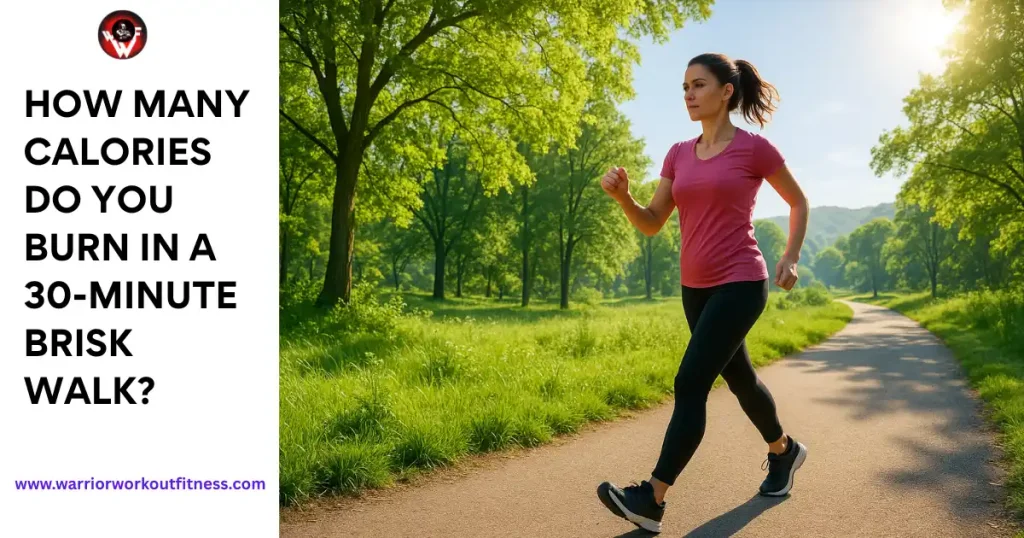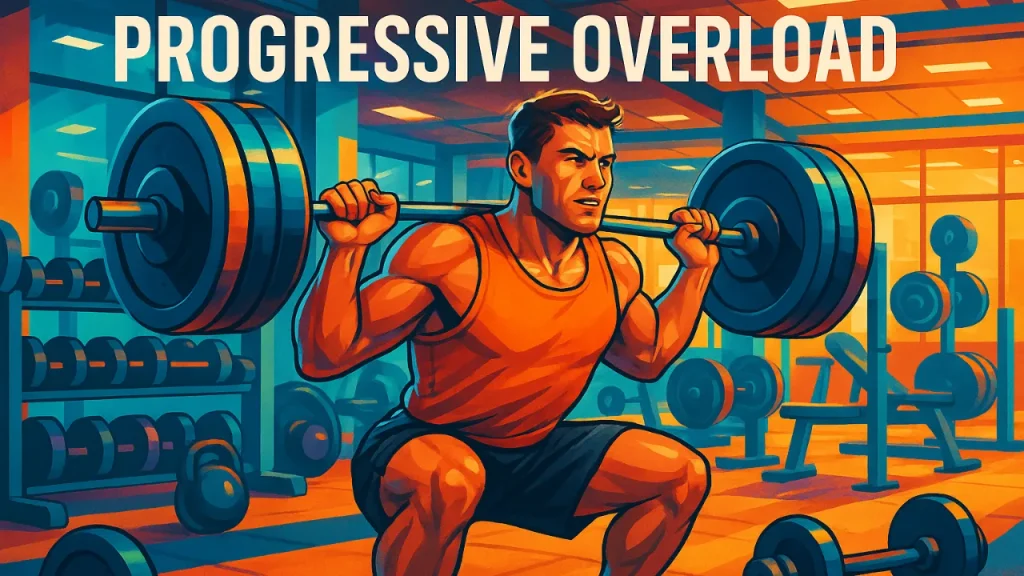Walking is one of the most accessible forms of exercise, offering numerous benefits for your health and fitness. A brisk walk, defined as walking at a pace that increases your heart rate and makes you slightly out of breath, is a great way to get moving and improve cardiovascular health, endurance, and weight management. But one common question people often ask is: How many calories do you burn in a 30-minute brisk walk?
In this article, we will explore the factors that influence the number of calories burned during a brisk walk, provide a general estimate of how many calories you can burn in 30 minutes, and offer tips on maximizing your calorie burn.
Factors That Affect Calorie Burn
The number of calories burned during a brisk walk can vary from person to person, depending on several factors. Let’s break down these factors:
1. Body Weight
Body weight is one of the most significant determinants of how many calories you will burn while walking. The more you weigh, the more energy (and calories) your body requires to move. For example, a heavier person will burn more calories than a lighter person, even if both walk at the same pace.
- For someone weighing 120 pounds: A 30-minute brisk walk can burn approximately 120 calories.
- For someone weighing 155 pounds: A 30-minute brisk walk can burn approximately 150 calories.
- For someone weighing 185 pounds: A 30-minute brisk walk can burn approximately 180 calories.
2. Walking Speed
Walking speed is another key factor. A brisk walk is generally considered to be around 3.5 to 4 miles per hour (about 5.6 to 6.4 kilometers per hour). If you walk faster or at an intensity that increases your heart rate more significantly, you will burn more calories. A higher intensity workout recruits more muscles, and your body expends more energy as a result.
- Moderate walk (3.0 mph / 4.8 km/h): Burns fewer calories.
- Brisk walk (3.5–4.0 mph / 5.6–6.4 km/h): Burns more calories.
3. Walking Terrain
The type of terrain you walk on can also impact the number of calories burned. Walking uphill or on an uneven surface requires more effort than walking on flat, smooth ground. For example, walking up an incline recruits more muscles and burns more calories than walking on a flat surface.
- Flat surface: Burns fewer calories.
- Inclined or hilly terrain: Burns more calories.
4. Walking Technique
Proper walking technique can help improve your calorie burn. Engaging your core, swinging your arms, and maintaining good posture can all increase the intensity of your walk, resulting in higher energy expenditure.
5. Fitness Level
Your fitness level also plays a role in how many calories you burn. People who are more fit may burn fewer calories for the same activity compared to those who are less fit. This is because their bodies are more efficient at performing the same movements.
- Less fit individuals: May burn more calories at a moderate pace due to less efficiency.
- More fit individuals: May burn fewer calories at the same pace due to increased efficiency.
How Many Calories Do You Burn in 30 Minutes of Brisk Walk?
Let’s look at some specific estimates for how many calories you burn in a 30-minute brisk walk. Please note that these are general estimates and may vary depending on the factors mentioned above.
For a 120-pound person:
- Calories burned in 30 minutes at 3.0 mph (moderate pace): 90-110 calories
- Calories burned in 30 minutes at 3.5-4.0 mph (brisk pace): 120-140 calories
For a 155-pound person:
- Calories burned in 30 minutes at 3.0 mph: 120-150 calories
- Calories burned in 30 minutes at 3.5-4.0 mph: 150-180 calories
For a 185-pound person:
- Calories burned in 30 minutes at 3.0 mph: 140-170 calories
- Calories burned in 30 minutes at 3.5-4.0 mph: 180-220 calories
As you can see, body weight plays a critical role in how many calories you burn, with heavier individuals generally burning more calories than lighter individuals. However, the intensity of your walk and your walking speed also significantly influence the total calorie burn.
Benefits of 30-Minute Brisk Walk Beyond Calorie Burn
While the primary focus of this article is on how many calories you can burn in a brisk walk, it’s important to note that walking also provides many other health benefits. These include:
1. Improves Cardiovascular Health
Brisk walking is an excellent cardiovascular exercise. Regular walking can improve heart health by increasing blood circulation, reducing blood pressure, and lowering cholesterol levels. This helps in preventing heart disease and strokes.
2. Boosts Mental Health
Walking has been shown to reduce stress, anxiety, and depression. It triggers the release of endorphins, which are chemicals in the brain that help improve mood. A brisk walk can also provide mental clarity and boost cognitive function, helping to reduce mental fatigue.
3. Strengthens Muscles and Bones
Walking helps in strengthening muscles, particularly those in the legs, hips, and lower back. It also helps to maintain bone density, reducing the risk of osteoporosis as you age.
4. Improves Sleep
Engaging in physical activity, such as walking, can help regulate your sleep cycle. It can help you fall asleep faster, enjoy deeper sleep, and wake up feeling more refreshed.
5. Aids in Weight Management
Since walking helps burn calories, it is an effective way to help maintain or reduce weight. When combined with a balanced diet, brisk walking can support long-term weight loss and weight management.
How to Maximize Your Calorie Burn While 30-Minute Brisk Walk
If you want to increase the number of calories you burn during a 30-minute brisk walk, here are some tips that can help:
1. Incorporate Intervals
One way to boost calorie burn is to incorporate intervals of higher intensity walking. For example, alternate between brisk walking for 1-2 minutes and a faster pace for 1-2 minutes. This interval training can elevate your heart rate and increase calorie burn during the walk.
2. Walk Uphill or on Inclines
Walking uphill is an excellent way to increase the intensity of your workout. If you can, choose a route with hills or use a treadmill with an incline setting. This will help engage more muscles and burn more calories.
3. Use Hand Weights or Weighted Vests
Carrying light hand weights or wearing a weighted vest while walking can increase the intensity and calorie burn. However, be careful not to overdo it and strain your joints.
4. Walk with Proper Form
Engage your core, maintain an upright posture, and swing your arms as you walk. This will help increase the efficiency of your walk and engage more muscle groups, leading to greater calorie burn.
5. Increase Walking Speed
The faster you walk, the more calories you will burn. If possible, try to gradually increase your walking speed to push your body’s limits. However, it’s essential to maintain a brisk but sustainable pace to avoid fatigue.
Conclusion
A brisk 30-minute walk can help you burn a significant number of calories, improving your overall health and fitness levels. While the exact number of calories burned varies depending on factors such as body weight, walking speed, terrain, and fitness level, a general estimate is that a 120-pound person burns around 120 calories, a 155-pound person burns about 150 calories, and a 185-pound person burns roughly 180 calories during a 30-minute brisk walk.
Beyond the calorie burn, brisk walking offers numerous health benefits, including improved cardiovascular health, better mental well-being, stronger muscles and bones, and enhanced sleep quality. To maximize your calorie burn, consider incorporating techniques such as walking uphill, using intervals, and carrying light weights.
Make brisk walking a regular part of your routine, and you’ll not only burn calories but also boost your overall physical and mental health.
FAQs
- Can I burn more calories if I walk faster?
Yes, walking at a faster pace increases your heart rate and engages more muscles, which leads to a higher calorie burn. - Does walking on an incline burn more calories?
Yes, walking uphill or on inclined surfaces recruits more muscles and burns more calories than walking on flat ground. - Is brisk walking a good way to lose weight?
Yes, when combined with a balanced diet, brisk walking can help with weight loss and weight management. - How often should I walk to see results?
For optimal health benefits, aim for at least 150 minutes of moderate-intensity aerobic activity, like brisk walking, per week. This can be broken down into 30 minutes a day, five days a week. - Can brisk walking help reduce belly fat?
Yes, brisk walking can help reduce overall body fat, including belly fat, especially when combined with a healthy diet and consistent exercise regimen.




